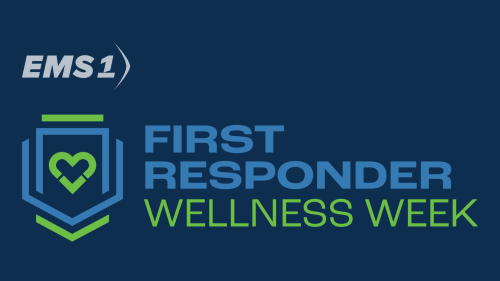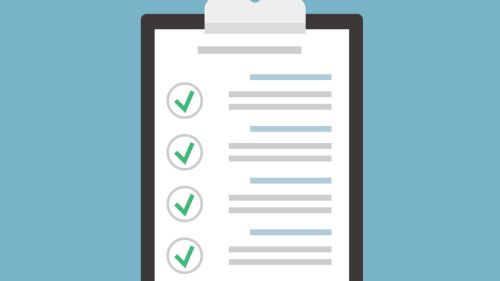Whether someone is suffering from panic attacks, anxiety attacks or both, one thing is for sure – it’s important to know which one you’re dealing with. The two conditions can be difficult for those experiencing them to distinguish between, as both can cause physical symptoms and leave individuals feeling scared and overwhelmed. However, understanding the differences between a panic attack and an anxiety attack is critical for proper diagnosis and treatment.
For EMS providers, it’s critical to understand which condition a patient may be suffering from in order to provide proper medical care. By talking to the patient, you can determine the root of the attack, which is key to discerning whether it was panic- or anxiety-induced.
[At the end of this article, download a panic attack vs. anxiety attack comparison chart to keep on hand and share with colleagues.]
How are panic attacks and anxiety attacks similar?
In popular culture, panic attacks and anxiety attacks are often used interchangeably as a way to convey that someone is experiencing a very uncomfortable phsyical state. However, anxiety attacks are often a symptom of a mental health condition or related to trauma, while panic attacks are correlated with a panic disorder.
The two conditions do share some common symptoms, including:
- Rapid heartbeat
- Shortness of breath
- Sweating
- Nausea
- Dizziness
- Chest pain or discomfort
What’s the difference between a panic attack and an anxiety attack?
While panic attacks and anxiety attacks are alike in some ways, they also have distinct differences that should be taken into consideration when it comes to treatment.
The hallmark characterisitic of a panic attack is that it has no trigger. An estimated 11% of the U.S. population experience a panic attack each year; however, only 2-3% have a diagnosed panic disorder.
Panic disorder symptoms include:
- Start suddenly and peak within minutes
- Intense physical symptoms that can feel like a heart attack or a life-threatening situation
- Fear of losing control or dying
- Typically last for a shorter duration than anxiety attacks (a few minutes to an hour)
- Can happen without any apparent trigger or cause
Anxiety attacks are typically a symptom of a mental health condition, or traumatic event, and:
- Develop slowly over time
- Give individuals a general feeling of unease, restlessness or tension
- Physical symptoms may be less intense than panic attacks
- Triggered by specific situations or events
- Can last for days, weeks or months
See the chart below to understand which symptoms overlap and which are distinct to each condition. At the bottom of the article, download a printable version of the chart to save on your phone or print for future reference.
EMS management of anxiety- or panic-induced attacks
If your patient seems to be suffering from one of these conditions, there are five important steps to take before transporting them to a medical facility:
Step 1: Conduct an assessment to determine nothing more serious is contributing to the attack.
Step 2: Separate the patient from familiar people and surroundings, as bystanders or the scene itself may be contributing to the attack.
Step 3: Establish friendly, confident eye contact with the patient. If a patient is not looking you in the eyes, but seems to be responding to your commands, they may be autistic. Learn more about how to interact responsibly with this community.
Step 4: Legitimize the emergency. Explain that you understand what is happening to them and know how to help.
Step 5: Model how to breathe calmly through exaggerated inhalations and exhalations. Some patients may start taking too shallow of breaths, which can lead them to hyperventilate, causing a host of medical complications.
How to relieve symptoms of a panic attack
Having a panic attack can be an overwhelming experience, but there are steps to manage and reduce the symptoms:
- Recognize that it is a panic attack. Knowing that you are having a panic attack and that it is not a life-threatening situation can help reduce the intensity of your symptoms.
- Pay attention to your breathing. Slow, deep breathing can help regulate your breathing and reduce physical symptoms like shortness of breath and heart palpitations. Focus on taking slow, deep breaths in through your nose and out through your mouth.
- Practice grounding techniques. Grounding techniques, such as focusing on your senses or counting objects in the room, can help you stay in the present moment and reduce feelings of detachment or unreality.
- Use muscle relaxation techniques. Progressive muscle relaxation, which involves tensing and then relaxing different muscle groups, can help reduce physical tension and anxiety.
- Distract yourself. Engage in a soothing or distracting activity, such as listening to music, doing a puzzle or taking a walk.
- Seek support. Talk to someone you trust, such as a friend, family member or mental health professional. Having a support system can help you feel less alone and provide you with resources for managing your panic attacks.
- Consider medication. In some cases, medication may be recommended to help manage panic attack symptoms. Talk to your doctor or a mental health professional to discuss your options.
How to reduce the symptoms of an anxiety attack
During an anxiety attack, it is essential to take steps to manage and reduce symptoms. Here are some steps:
- Breathe deeply. Slow, deep breathing can help regulate your breathing and reduce physical symptoms like shortness of breath and heart palpitations. Focus on taking slow, deep breaths in through your nose and out through your mouth.
- Practice relaxation techniques. Relaxation techniques like meditation, progressive muscle relaxation, or visualization can help calm your mind and body.
- Challenge negative thoughts. Anxiety attacks can be triggered by negative thoughts or beliefs. Try to identify and challenge these thoughts by asking yourself if they are realistic or helpful.
- Stay in the present moment. Anxiety attacks can make you feel like you are losing control or that something terrible is about to happen. Focus on staying in the present moment and reminding yourself that the symptoms will pass.
- Seek support. Talk to someone you trust, such as a friend, family member or mental health professional. Having a support system can help you feel less alone and provide you with resources for managing your anxiety.
- Consider medication. In some cases, medication may be recommended to help manage anxiety symptoms. Talk to your doctor or a mental health professional to discuss your options.
Proper diagnosis = better treatment
Panic attacks and anxiety attacks may share some similar symptoms, but they are different conditions. Panic attacks are sudden and intense bursts of fear or terror, while anxiety attacks are characterized by persistent and ongoing worry and physical symptoms.
Remember that both panic attacks and anxiety attacks can be managed and treated. If you are experiencing symptoms of either condition, it is important to seek medical advice for proper diagnosis and treatment.
This article, originally posted in April 2023, has been updated with additional resourves and an explainer video.
















